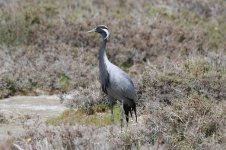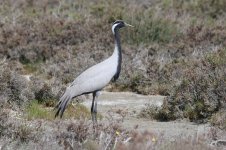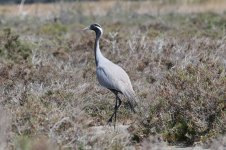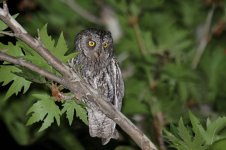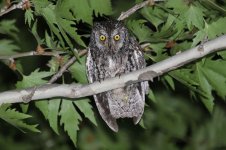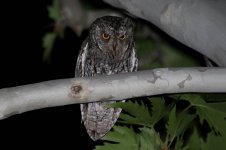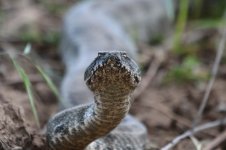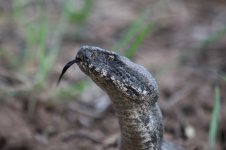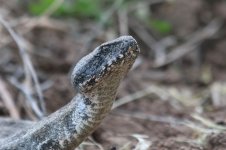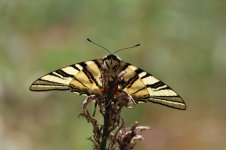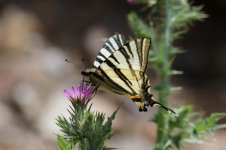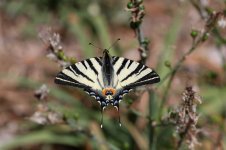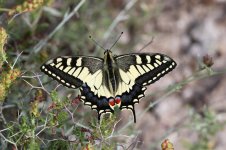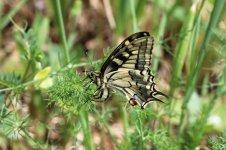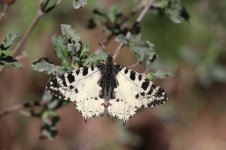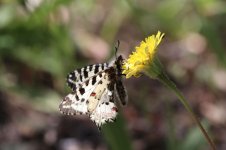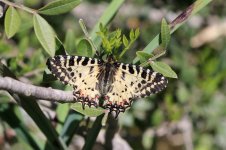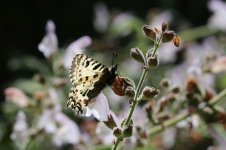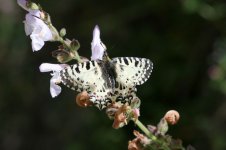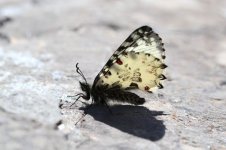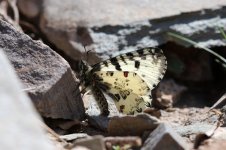30 April. Omolas Road.
Chilly start in this spectacular landscape, only 6 C, far too cold for butterflies. Time for birding, chiefly at the head of the Samaria Gorge. A very pleasant mix here, alongside abundant everyday birds such as
Blackbirds,
Wrens and
Chaffinches, some nice Cretan flavour additions -
Griffon Vultures,
Alpine Swifts and
Red-billed Choughs overhead,
Blue Rock Thrushes and
Black-eared Wheatears on the crags,
Turtle Doves,
Woodlarks and
Cirl Buntings in the scrub zone. Several
Wrynecks also calling, a flock of
European Bee-eaters in the agricultural area and a couple of pairs of
Woodchat Shrikes too.
As for butterflies, I descended a little, following the road back down from Omolas and, even then, it wasn't until 10.30 that the action started. But when it did start, it was spectacular - first species a
Cretan Festoon, seconds later a
Scarce Swallowtail and then, while still watching these two, an
Eastern Baton Blue. Within moments, the slope was full of butterflies, at 800 metres altitude, I was again in a Goldilocks zone. In temperatures now rising above 20 C, I slowly worked down the slope, exploring side tracks and flower meadows, amazing numbers of
Cretan Festoons and
Scarce Swallowtails all the way, these clocking in at absolute minimums of 75 and 26 respectively. Also plenty of other species,
Eastern Dappled Whites moderately common,
Holly Blues very much so. Unfortunately, descending below the village of Lakkoi, the super abundance dried up a little, though still
Cretan Festoons remained in lesser numbers and
Speckled Woods became ever more common.
Approximate totals:
Swallowtail - 12
Scarce Swallowtail - 26
Cretan Festoon - 75+
Large White - 12
Mountain Small White - 15
Small White - 80+
Eastern Dappled White - c.20
Clouded Yellow - 30
Red Admiral - 2
Painted Lady - 8
Speckled Wood - 45
Wall Brown - 8
Holly Blue - 50+
Common Blue - c.25
Brown Argus - 1
Eastern Baton Blue - 4
Lulworth Skipper - 2
In the lowlands by middle afternoon, I decided to pop into Agia Lake again -
Whiskered Terns gone, but still the
White-winged Black Tern was present, so too the
Little Crake. Tried to find
Wood White without success, but did encounter both a
Little Bittern and a
Great Snipe! I can live with that

Tried later to find some wasteland near the coast, perhaps a
Grass Jewel or
Dark Grass Blue to round the day off. No such luck here either, several
Swallowtails the main butterfly highlight, four circling
Honey Buzzards also nice. With that, I called it a day and found accommodation in Platanius.






